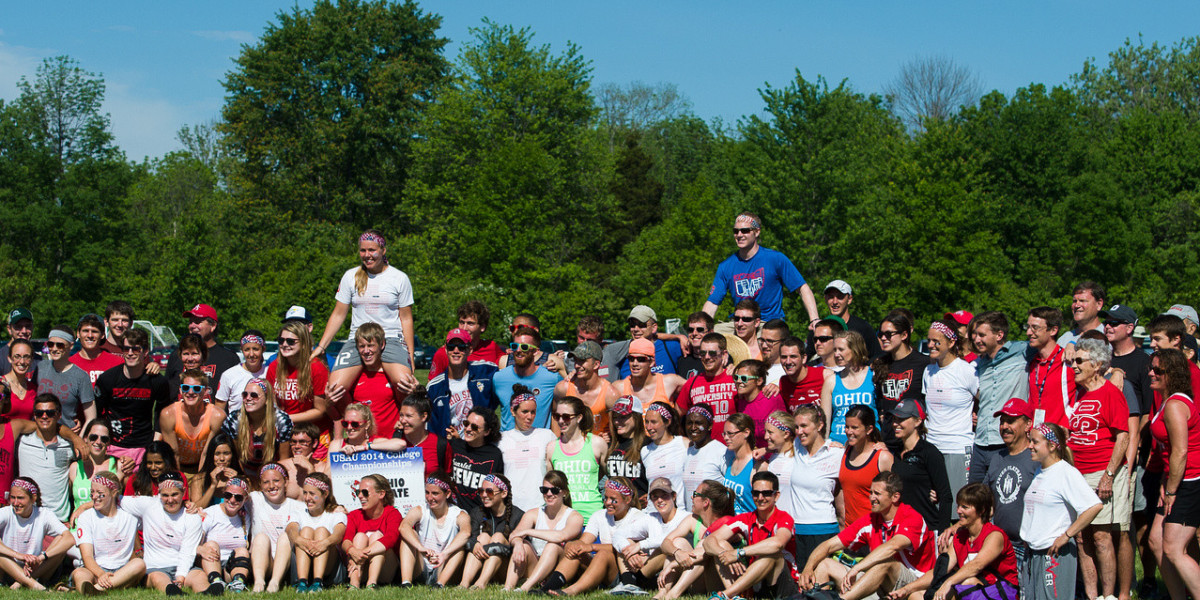 UltiPhotos.com
" />
Kevin Leclaire - UltiPhotos.com
UltiPhotos.com
" />
Kevin Leclaire - UltiPhotos.com
When I started coaching eight years ago, my team could barely scrimmage 5v5 at practice. We now have a championship trophy and a Callahan winner.
I have been asked a lot recently about what Ohio State Fever has done over the last decade or so to find success. And generally when that question is asked, it’s in the context of winning the national championship.
For me, while the question is about the team’s recent success, the answer is more about the building of a program. And it’s not something anyone did alone. It involved, and still does involve, the growth and development of a team of coaches, captains, team leaders, and the larger ultimate community.
It takes a village.
The reality is that a lot of effort goes into building any team, let alone one that wins a championship. It isn’t just about any one season, but rather the program and whether it can grow and develop over the long term. Once your goal goes shifts toward sustainability and continuity, your next question should be about the size and makeup of your village.
Things have changed
When I first found this sport, there were just players. Coaches were teammates who played and who liked to talk and lead. Captains were teammates that had more experience and were willing to shoulder the team’s administrative and logistical load. For the most part, a team’s success was based on athleticism, coupled with some knowledge of not just ultimate but field sports in general.
I don’t mean it to sound so archaic, implying that back then playing ultimate resembled a group of 1st graders chasing a soccer ball en masse. It’s just that at that point, what differentiated teams was a little less about style and strategy, and more about their ability to execute the fundamentals of ultimate: run-catch-throw. My first ultimate (cotton) shirt actually said that.
To succeed you’ve got to keep evolving
While those fundamentals are still the foundation of playing ultimate, it’s more like cut-adjust your zone-layout-scout your opponent-break-train year-round. You’ve got to understand the nuance of how each of those parts goes into building a successful team and program. And the more people you’ve got collaborating on that understanding, the better.
A sustainable program that generates championship-level teams must use the village concept to take advantage of this wealth of knowledge. The impact of incorporating different playing styles and strategy concepts is critical to the development of a sustainable program, and in most cases beyond what one person can bring.
When I first started coaching, I was “old school.” My perception was that the role of the coach was more of support than that of a strategist. And my “aha!” moment wasn’t a single instance, but rather the recognition over time that on the field this sport is evolving in ways that require constant attunement to new ideas. Lucky for any coach, captain, or team leader, the accessibility of ultimate resources has kept pace with evolution of playing styles and strategies. The pure number of people with ultimate knowledge is huge, and the availability of blogs, articles, and videos with coaching tips, on-the-field strategies, and conditioning ideas is growing.
Smart ideas come from the east coast to the west coast, from league players to national team coaches.
The village roster
An ultimate village is comprised of many different parts. Village members can include coaches, captains, team leaders, practice helpers, alumni, parents and family, fans, friends, professors, and roommates. Each of these categories has their place in the village, and each provides unique support to the building of a successful and sustainable program.
Coaches are acquiring and refining skills that go beyond a desire to talk and lead. Captains are typically tenured players that bring more than just experience to the table; many possess skills and knowledge that would make them great coaches if they weren’t playing. Team leaders pull teammates aside and help with skills and strategy. Practice helpers, which are often local club players, increase the competitiveness at practice. Alumni have trouble hanging up their cleats and retiring their jerseys, and they can bring a sense of family to a practice. And the remainder – parents/family, fans, friends, professors, and roommates – they all support by cheering at tournaments and assisting players in managing their non-ultimate lives behind the scenes.
Village members will ebb and flow, but in the end even momentary and transitory contributions make a difference. While it often feels like a team is taking two steps forward, one step back, the village will help a program grow and thrive.
I have learned this village concept, and I embrace it.









Comments Policy: At Skyd, we value all legitimate contributions to the discussion of ultimate. However, please ensure your input is respectful. Hateful, slanderous, or disrespectful comments will be deleted. For grammatical, factual, and typographic errors, instead of leaving a comment, please e-mail our editors directly at editors [at] skydmagazine.com.